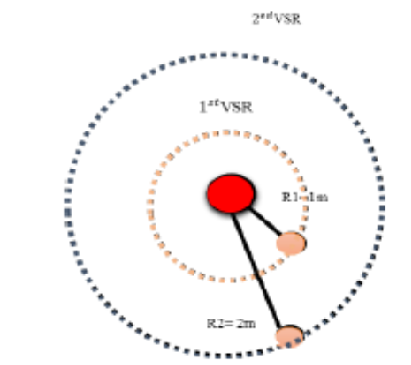


Indian Journal of Science and Technology
Year: 2024, Volume: 17, Issue: 1, Pages: 90-96
Original Article
Omar Abdulkader1*
1Faculty of Computer Studies, Arab Open University, Kingdom of Saudi Arabia
*Corresponding Author
Email: o.abd[email protected]
Received Date:21 September 2023, Accepted Date:29 October 2023, Published Date:12 January 2024
Objectives: The primary objective of the study is to propose and evaluate a novel solution to address network congestion in VANET technology by introducing Virtual Safety Regions (VSR). This involves implementing the K-Neighborhood Network (KNN) algorithm to create virtual regions around vehicles, allowing them to connect directly with others in the same VSR without broadcasting messages across the entire network. The ultimate aim is to significantly reduce congestion while maintaining essential data transmission for safety and traffic control within VANETs. Methods: The study's methodology revolves around implementing the K-Neighborhood Network (KNN) algorithm to establish Virtual Safety Regions (VSR) around vehicles in VANETSs. This innovative approach enables vehicles to communicate exclusively with others located within the same VSR, eliminating the need for broadcasting messages to the entire network. The study extensively examines the VSR method, delving into algorithmic intricacies and assessing its performance through simulation-based experiments. These methods are aimed at comprehensively evaluating the effectiveness of VSR in mitigating VANET congestion and improving network performance. Findings: The study's findings highlight the success of the proposed Virtual Safety Region (VSR) method in addressing VANET congestion. Through simulation-based experiments, it was demonstrated that VSR significantly reduces network congestion, leading to marked improvements in network performance and reduced communication latency compared to existing methods. Moreover, the study identified various potential applications for VSR within the transportation sector, including accident prevention, traffic management, and emergency response. It also noted that VSR could be integrated with other technologies like 5G and autonomous vehicles to enhance the efficiency and safety of transportation networks. In summary, the findings underscore the potential of the VSR methodology to effectively mitigate VANET congestion and enhance the overall dependability of VANET technology, with far-reaching implications for the future of transportation systems. Novelty: The novelty of this study lies in its holistic approach to mitigating VANET congestion through the innovative VSR concept, coupled with a thorough exploration of its algorithmic aspects, empirical validation, and recognition of its broader applications and adaptability to emerging technologies.
Keywords: Congestion Control, VANET, BSM, VSR, KNN, ITS
© 2024 Abdulkader. This is an open-access article distributed under the terms of the Creative Commons Attribution License, which permits unrestricted use, distribution, and reproduction in any medium, provided the original author and source are credited. Published By Indian Society for Education and Environment (iSee)
Subscribe now for latest articles and news.